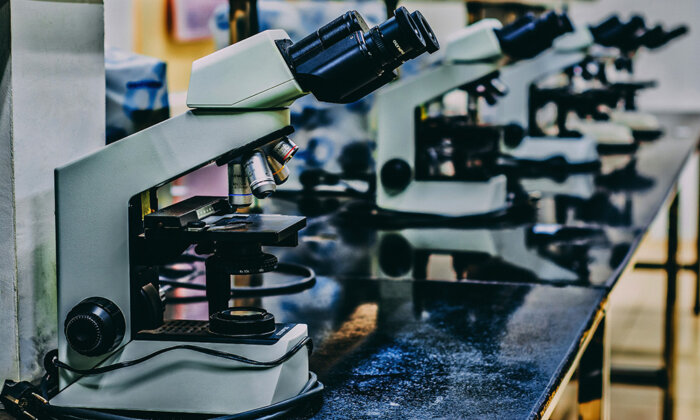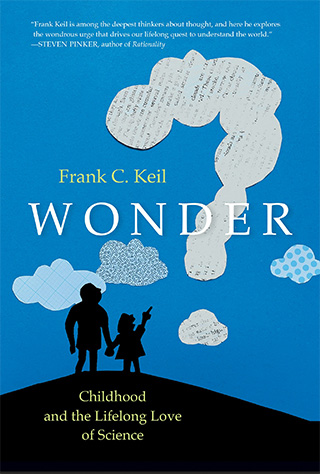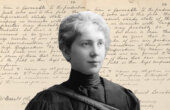When Teachers Dread Science, Students Suffer

In 2018, PBS aired a segment on preschool teachers and their worries about teaching STEM. One teacher was described as feeling “that children’s unrestrained curiosity can sometimes make him feel anxious about teaching certain subjects, like science.” Others found it too complicated and felt “just uncomfortable with it.” Even teaching the simple mechanics of how objects roll down ramps was regarded with great apprehension by several teachers.

Unfortunately, as documented by numerous studies, teachers’ attitudes toward science often influence the children they teach. Their own anxieties get passed down. These effects can be painfully nuanced: For example, Children can pick up teachers’ sentiments that girls can’t do math but boys can. But it is not just teachers who have such feelings. They are widely shared among many adults who at some point in their lives came to regard science as the realm of a special few.
Attitudes toward STEM are highly influenced by one’s own educational experiences. When preservice elementary school teachers are provided with more content knowledge in areas of science such as biology and physics, they show increased confidence and enjoyment in teaching science. As their content knowledge grows, they gain insight into how to make ideas in physics and biology more pedagogically appropriate for their students. A deeper understanding of content may be just as important in teacher preparation as learning about educational theory and practice and developmental psychology.
But teachers are not the primary problem. They merely reflect how many of us view science and technology.
We can develop negative attitudes toward science when misplaced views about children’s minds lead to assessments that fuel feelings of incompetence. Much of early science education focuses on learning names, salient properties, and categories. Causal relations may be discussed, but we rarely provide children with anything close to “mechanistic tool kits” for deciphering the world. Instead, causal relations are limited to general ideas such as “animals are adapted to their environments,” “animals and plants need energy,” and “causes precede effects.” Much of instruction dwells on the process of science: measuring, classifying, and sorting. Other curricula stress the importance of “evidence” relentlessly year after year.
Causal relations may be discussed, but we rarely provide children with anything close to “mechanistic tool kits” for deciphering the world.
Many children are deprived of those elements of science that they want to learn about the most, namely what explains a thing’s observable properties and why it behaves as it does. When the psychologists Margaret Donaldson, Barbara Tizard, and Martin Hughes described the loss of interest in the school years 40 years ago, they repeatedly stressed how most traditional classrooms transform wonder-driven interactive questioning between children and adults into assessment-driven questions. Teachers directed their questions at children in order to check what facts had been transmitted effectively. As a result, questions from children to teachers disappeared.
In contrast, when explanation-based approaches are used, children gain a sense of mastery as they can use their acquired knowledge to evaluate and build on explanations and to seek out more expert sources. Interconnected causal relations help support each other in recall, enabling more rapid, flexible, and satisfying use in problem-solving and innovation.
For example, rather than just list some features of wolves, you might explain how a cluster of features all support hunting prey, such as forward-facing eyes and ears, sharp claws and teeth, enhanced olfactory and visual abilities, abilities to run over 40 miles per hour for short distances, and strong jaws. A more elaborate explanation might describe how these features causally interact.
When Teaching Goes Well
We all hear about teachers and other adults who are gifted at conveying science content while also inspiring their students. They are a heterogeneous group who work in diverse settings, but there seem to be a few recurring patterns. Consider two exceptional teachers from very different places and schools. One teacher was nationally well-known. The other had an enormous influence on my own education.
The well-known example is Sister M. Gertrude Hennessey, a teacher in a small parochial school in Stoughton, Wisconsin. Sister Gertrude, as everyone called her, was the sole science teacher from grades one to six. She taught science by examining the critical concepts in an area and how they change as children learn. She worked with her students to create a narrative that connected their learning with self-awareness. By fostering this metacognitive awareness, she helped her students appreciate the evolving nature of scientific knowledge and how it is changed through discussion, questioning, and exploration.
Sister Gertrude wanted children to clearly state their own ideas and to be able to explain why they endorsed their position. She showed them how to explore the limitations and weaknesses of their ideas and how they might not be internally coherent. By the sixth grade, her students were talking about the learning of science at the same level as college students. Consider the comments of a sixth grader who had worked with Sister Gertrude for six years:
In the past I thought for instance the book on the table had only one force, and that force was gravity. I couldn’t see that something that wasn’t living could push back.… However, my ideas have changed.… Sister helped me to see the difference between the macroscopic level and the microscopic level.… I began to think about the book on the table differently—[last school year] I was thinking on the macroscopic level and not on the microscopic level. This year I wasn’t looking at the table from the same perspective as last year. Last year I was looking at living being the important focus and now I am looking at the molecules as being the important focus. When I finally got my thought worked out I could see things from a different perspective. I found out that I had no trouble thinking about two balanced forces instead of just gravity working on the book.… now I can see balanced forces everywhere! Balanced forces are needed to produce constant velocity! The book on the table has a velocity of zero, that means it has a steady pace of zero.… I have expanded my mind to more complicated ideas! Like molecules in a table can have an effect on a book, that balanced forces and unbalanced forces are a better way of explaining the cause of motion, and that constant velocity and changing velocity are important to look at when describing motion. [grade 6]
Researchers who visited the class and Sister Gertrude uniformly insisted that such statements were typical for the children, not just remarks of a few standout metacognitive wizards. Sister Gertrude managed to instill in virtually all her students an explicit awareness of the pleasures of changing one’s beliefs. They discovered how change could help them embrace more powerful concepts that enabled them to see new things “everywhere.” Children learned that to discover a problem with one’s own understanding and correct it was liberating and empowering.
The second example of an inspirational teacher was my own science teacher in the early 1960s. Jesse Knight Jr. was the only science teacher in my small school, and he taught the same children from grades four to eight.
Children learned that to discover a problem with one’s own understanding and correct it was liberating and empowering.
“Mr. Knight” (I still feel obliged to refer to him in that way) taught with an ever-present gusto and pleasure. The entire classroom awaited each class as a kind of dramatic performance. He talked most of the time, but we all knew that he might fire a question at any one of us at any moment, and his questions usually asked us to explain a phenomenon or mechanism back to him in our own words. Like Sister Gertrude, he was fully engaged with each student and monitored in real time how well each of us was understanding the underlying concepts. He demonstrated how even a didactic lecture style could keep everyone engaged. But this was not staid lecturing from a podium. It was rapid pacing about, with piercing darting glances that made us feel that Mr. Knight could read our every thought.
Mr. Knight’s lessons made elaborate use of history. The history may have been embellished or cleaned up at times to make a point clearer, but it worked beautifully as a vehicle for teaching us about the nature of science, about the role of ignorance, and about the importance of communities.
I still vividly remember how he explained the workings of an internal combustion engine, for example. He started with the idea of chemical energy, how some compounds had energy stored in their chemical bonds. He showed how this energy could be released through reactions that broke those bonds. He described how chemical energy was first harnessed in about 1000 CE in China — how people learned how to mix charcoal, sulfur, and nitrates so as to make gunpowder. (This included a humorous side story about guano and animal sources of nitrates.) They then learned how to pack gunpowder into a container, he explained, and how to rapidly release its energy by heating it and creating an explosion — the first firecracker. He illustrated this in the classroom by creating a bright flash after heating a small amount of gunpowder. He explained that if it were trapped in a container, it could have been a great firecracker, and a dangerous one if the container was made of metal.
Mr. Knight then asked us how all this energy could be used in a more controlled way to do work, such as powering a car (thereby introducing the concept of work as well). He eventually guided us to the idea of shaping a container so that the explosive force was directed. Mr. Knight explained why this was a hard problem that took centuries to figure out. He said it involved a lot of failed attempts, thereby also showing us how failures are to be expected as a natural part of progress.
I have left out many other details. Mr. Knight’s planned digressions covered everything from a parallel line of innovations with steam engines to the inner-workings of pistons and valves. In the grand finale, he walked over to an actual gasoline engine that was partially assembled under a window on the side of the classroom. He quickly finished assembling it and started it up. It was better than magic.
Mr. Knight was certainly not the first teacher to use historical narratives to teach science and technology. James Bryant Conant, Harvard president from 1933 to 1953, spent much of his later years teaching science through historical approaches that emphasized the process of discovery. Science education scholars have also argued for the value of such an approach at levels ranging from college (most often) to elementary school. Historical approaches have been praised for how they enhance insight into conceptual change, epistemology, the nature of science, and motivation and intrinsic interest. They also interweave examples and “experiences” with principles and models in each new cycle of discovery, much like a current practice of exposing students to the phenomenon first before trying to explain it in terms of principles.
But historical narratives are surprisingly rare in the elementary school classroom. Some argue that all that history takes up too much time in an already overloaded curriculum, but it didn’t seem that way with Mr. Knight. History provided a way to integrate content and to make it personally accessible and more memorable.
The historical approach may also be avoided in elementary school because of beliefs that one should teach through discovery, exploration, and hands-on activities and not in the form of lectures. However, as the psychologist David Klahr points out, a major gap exists between educational policy and the findings of cognitive science research. While most policies embrace discovery methods of teaching, most cognitive science research in the experimental tradition still finds major benefits to situations in which the teacher spent much of the time talking to students.
As the psychologist David Klahr points out, a major gap exists between educational policy and the findings of cognitive science research.
Of course, lectures can be excruciatingly boring if they are not appropriately calibrated for the intended students. But when narratives are done well, and this often includes many back-and-forth interchanges between teacher and students, they can be excellent methods of instruction. A second concern might be that teaching through history focuses too much on “dead White males,” but this is merely a problem of bad history. History can be a wonderful vehicle for illustrating different cultural perspectives and how people can change over time.
In the end, the pressure to teach the mandated curriculum so that students will perform better on standardized tests may be the primary reason why teachers are nervous about including any extra historical material. Ironically, historical perspectives might even help performance on those admittedly flawed tests. In addition, teachers might need to idealize the history so as not to wade too deep into the complexities of incorrect directions, especially with young children. After all, many early scientific theories, such as earth-centered orbits, were devilishly complicated and only understood by a few adults at that time. Histories for young children may often have to depict more idealized paths that gloss over the complicated detours. They should still make sure children are aware of the detours so they can understand the virtues of intellectual humility, but they don’t need to cover detours in such detail.
Why was this approach so riveting and effective for so many of us? In today’s terms, it was remarkably inclusive and cross-cultural. It showcased the importance of failures, different and evolving communities of knowledge, metacognition (recognizing bad ideas), conceptual change, trial and error versus controlled experimentation, and effort. Mr. Knight exemplified continuous lifelong learning as he frequently started class waving a new article or newspaper clipping that had changed how he understood something. He often said he didn’t know the answer to questions and told us, in those pre-internet search days, how to find out.
Sister Gertrude and Mr. Knight differed in many ways, but they shared important aspects of approaching and thinking about science. They both exemplified the virtues of intellectual humility and the willingness, even eagerness at times, to acknowledge their knowledge limits. Because of this humility, they saw engaging with science as a lifelong process of continuous learning driven by the pleasure of learning new things, often changing one’s mind as a result, and then seeing the world in even greater splendor and beauty.
Frank C. Keil is Charles C. & Dorathea S. Dilley Professor of Psychology at Yale University. He is the author of several books, including “Developmental Psychology: The Growth of Mind and Behavior” (W.W. Norton & Company) and “Wonder: Childhood and the Lifelong Love of Science,” from which this article is adapted.



